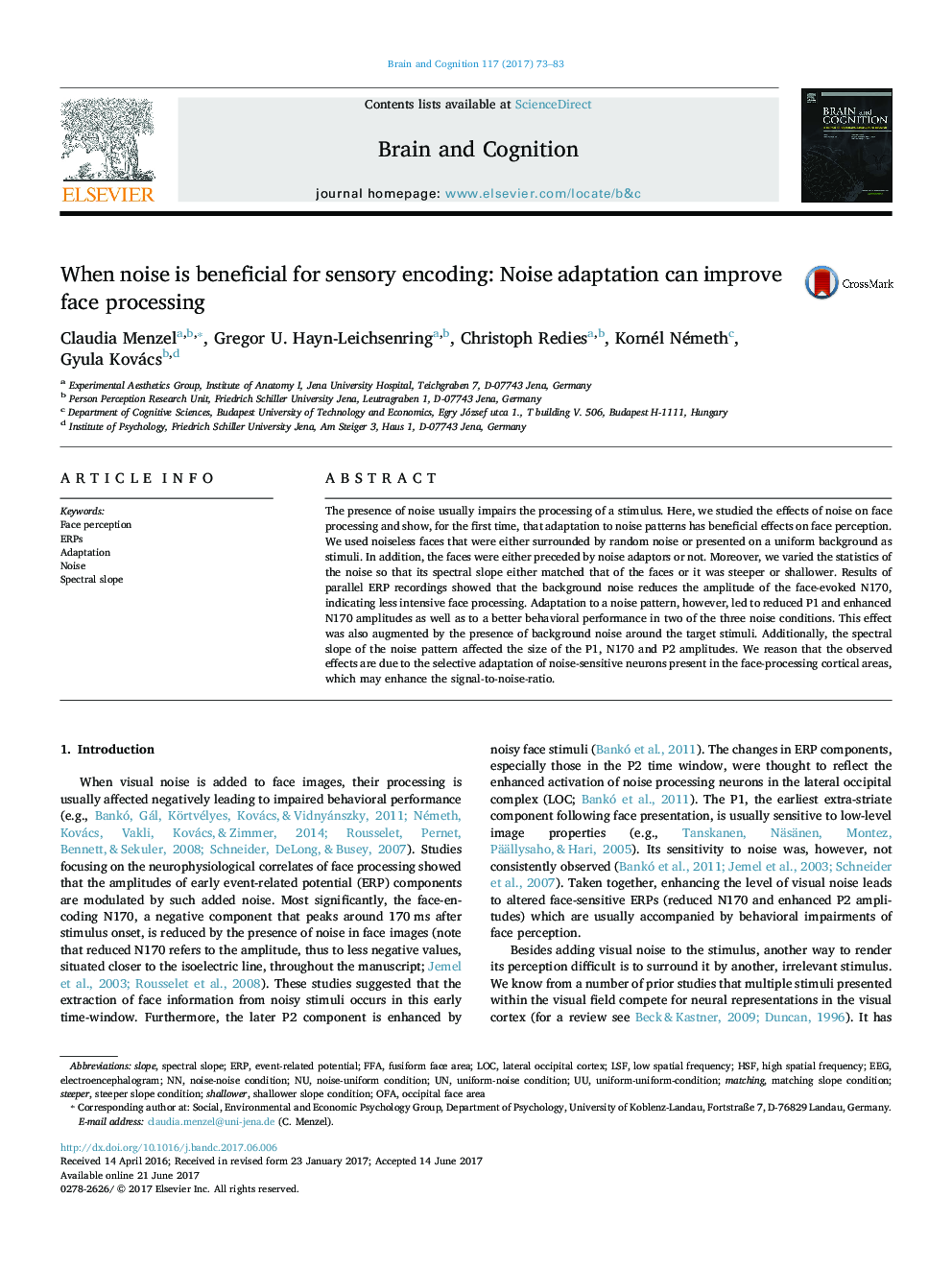| Article ID | Journal | Published Year | Pages | File Type |
|---|---|---|---|---|
| 5041068 | Brain and Cognition | 2017 | 11 Pages |
â¢We studied how noise patterns affect face perception.â¢Face processing is facilitated after adaptation to noise.â¢The adaptation effect is enhanced by the presence of surrounding noise.â¢The spectral slope of the noise patterns affects the size of the effect.
The presence of noise usually impairs the processing of a stimulus. Here, we studied the effects of noise on face processing and show, for the first time, that adaptation to noise patterns has beneficial effects on face perception. We used noiseless faces that were either surrounded by random noise or presented on a uniform background as stimuli. In addition, the faces were either preceded by noise adaptors or not. Moreover, we varied the statistics of the noise so that its spectral slope either matched that of the faces or it was steeper or shallower. Results of parallel ERP recordings showed that the background noise reduces the amplitude of the face-evoked N170, indicating less intensive face processing. Adaptation to a noise pattern, however, led to reduced P1 and enhanced N170 amplitudes as well as to a better behavioral performance in two of the three noise conditions. This effect was also augmented by the presence of background noise around the target stimuli. Additionally, the spectral slope of the noise pattern affected the size of the P1, N170 and P2 amplitudes. We reason that the observed effects are due to the selective adaptation of noise-sensitive neurons present in the face-processing cortical areas, which may enhance the signal-to-noise-ratio.
